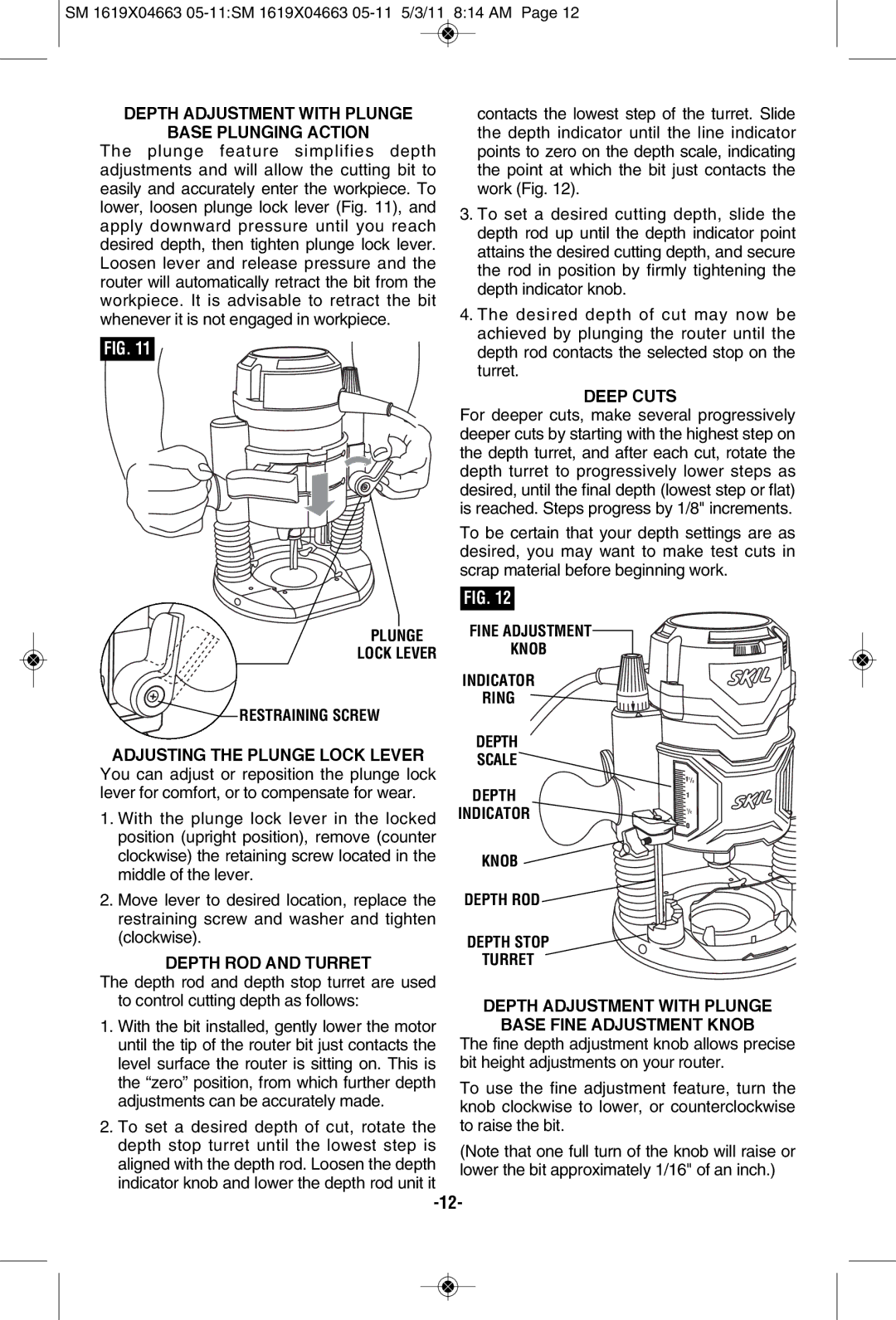1827, 1817, 1830 specifications
Skil is a renowned brand in the power tool industry, offering a range of products that cater to the needs of both professionals and DIY enthusiasts. Among its impressive lineup, the Skil 1830, 1817, and 1827 models stand out for their unique features and versatile capabilities, making them essential tools for a variety of applications.The Skil 1830 is a highly efficient reciprocating saw designed for both heavy-duty tasks and intricate cutting jobs. One of its standout features is the Variable Speed Control, which allows users to adjust the speed according to the material being cut. This feature ensures maximum precision and control, whether working with wood, metal, or plastic. The 1830 also comes equipped with a tool-less blade change system, making it easy to switch blades quickly and efficiently. Its powerful motor ensures optimal performance, while the ergonomic handle provides comfort during extended use.
On the other hand, the Skil 1817 is a versatile circular saw that is perfect for both beginners and seasoned pros. Its powerful 15-amp motor delivers impressive cutting performance, enabling users to easily tackle a variety of materials. One of the most notable aspects of the 1817 is its laser guide system, which enhances accuracy and precision when making straight cuts. Additionally, the integrated dust blower keeps the cutting line clear for improved visibility, while the lightweight design of the saw allows for easy maneuverability without sacrificing power.
Lastly, the Skil 1827 is a robust and reliable jigsaw that excels in making curved and intricate cuts. Its orbital cut option allows users to switch between a pendulum action for fast cuts and a straight cut for finer details. The 1827 features a variable speed dial that can be adjusted based on the material, ensuring optimal performance for every job. An integrated blower keeps the cutting line free of debris, enhancing visibility and accuracy. Its ergonomic grip ensures comfort during extended use, and the tool-less blade change feature allows for quick and easy blade swaps.
In summary, the Skil 1830, 1817, and 1827 power tools offer a range of features and technologies that cater to various cutting needs. From the adjustable speed and tool-less blade changes of the 1830 to the laser guide of the 1817 and the orbital cutting options of the 1827, each model is designed with the user in mind, ensuring ease of use, comfort, and precision. Whether working on a professional project or a home improvement task, these Skil tools provide the reliability and performance needed to achieve excellent results.

